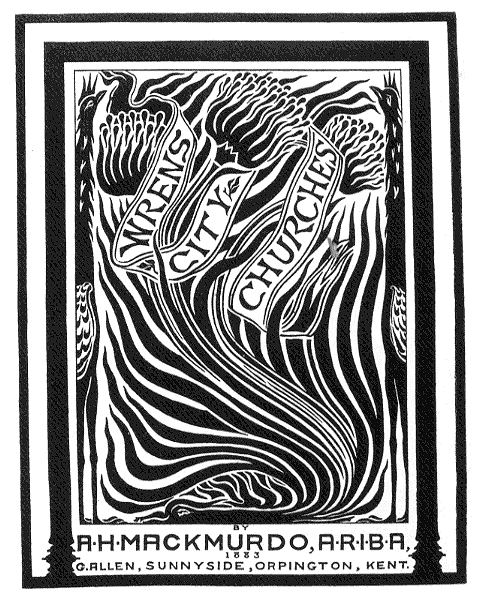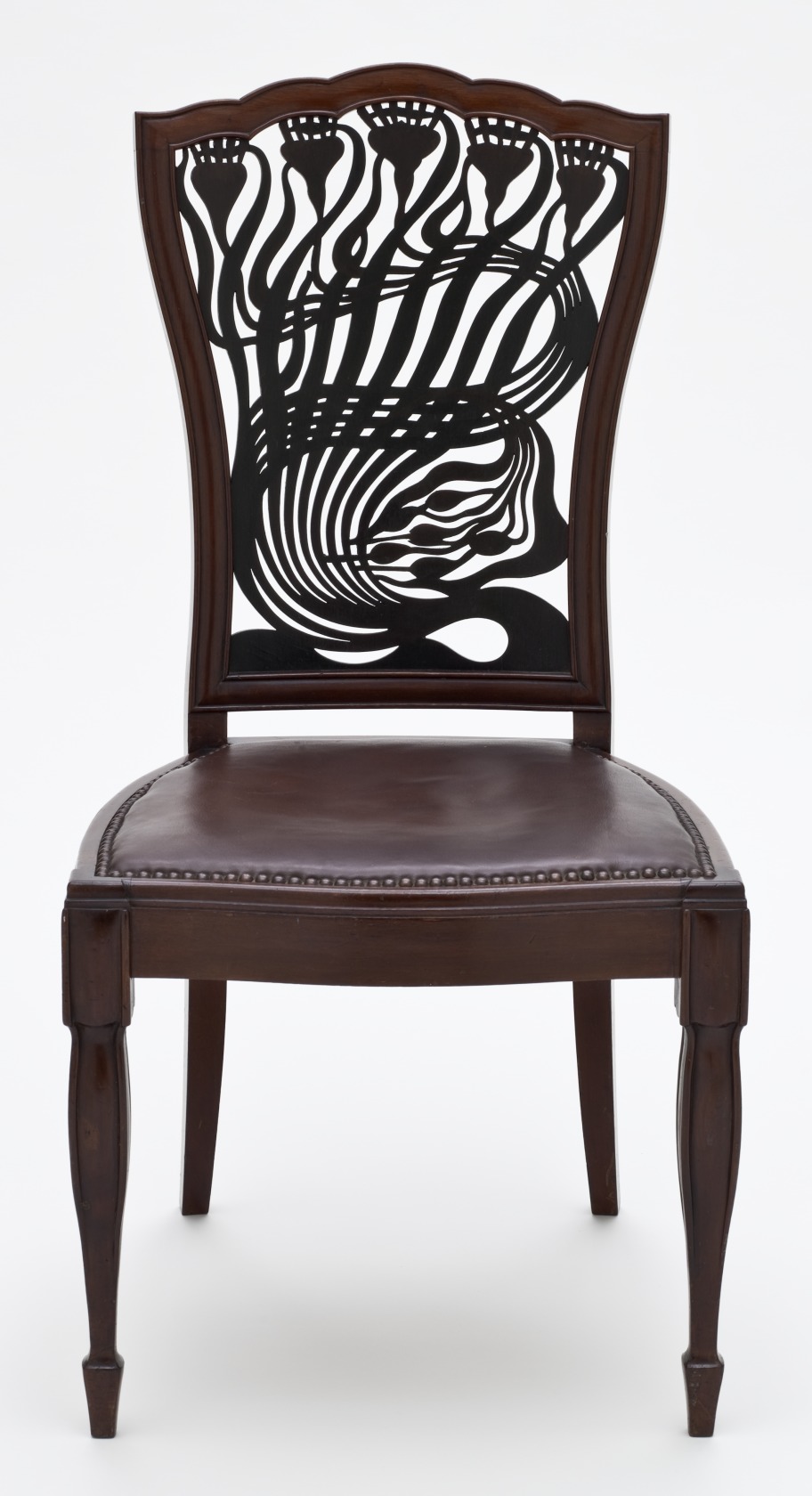A.H. Mackmurdo on:
[Wikipedia]
[Google]
[Amazon]
 Arthur Heygate Mackmurdo (12 December 1851 – 15 March 1942) was a progressive
Arthur Heygate Mackmurdo (12 December 1851 – 15 March 1942) was a progressive
 In 1882, Mackmurdo founded the Century Guild of Artists with his friend and fellow architect
In 1882, Mackmurdo founded the Century Guild of Artists with his friend and fellow architect
Victorian Web:
A.H. Mackmurdo, an Overview ("Arthur Heygate Mackmurdo" throughout)
Introduction: Philosophy & Background * Lambourne, Lionel (1980) ''Utopian Craftsmen: The Arts and Crafts Movement from the Cotswold to Chicago''. London. Astragal Books
 Arthur Heygate Mackmurdo (12 December 1851 – 15 March 1942) was a progressive
Arthur Heygate Mackmurdo (12 December 1851 – 15 March 1942) was a progressive English
English usually refers to:
* English language
* English people
English may also refer to:
Peoples, culture, and language
* ''English'', an adjective for something of, from, or related to England
** English national ide ...
architect and designer, who influenced the Arts and Crafts Movement, notably through the Century Guild of Artists
The Century Guild of Artists was an English group of art enthusiasts that were active between c.1883 and 1892. Their work was primarily based on 18th century motifs, though some work was Art Nouveau in style.
History
The Guild was founded in 188 ...
, which he set up in partnership with Herbert Horne
Herbert Percy Horne (1864 in London – 1916 in Florence, Italy) was an English poet, architect, typographer and designer, art historian and antiquarian. He was an associate of the Rhymers' Club in London. He edited the magazines ''The Centur ...
in 1882. He was the pioneer of the Modern Style (British Art Nouveau style)
The Modern Style is a style of architecture, art, and design that first emerged in the United Kingdom of Great Britain and Ireland, United Kingdom in the mid-1880s. It is the first Art Nouveau style worldwide, and it represents the evolution of th ...
and in turn global Art Nouveau
Art Nouveau (; ) is an international style of art, architecture, and applied art, especially the decorative arts. The style is known by different names in different languages: in German, in Italian, in Catalan, and also known as the Modern ...
movement.Early life
Mackmurdo was the son of a wealthy chemical manufacturer. He was educated atFelsted School
(Keep your Faith)
, established =
, closed =
, type = Public schoolIndependent day and boarding
, religion = Church of England
, president =
, head_label = Headmaster
, head = Chris Townsend
, r_head_l ...
, and was first trained under the architect T. Chatfield Clarke, from whom he claimed to have learnt nothing. Then, in 1869, he became an assistant to the Gothic Revival architect James Brooks. In 1873, he visited John Ruskin
John Ruskin (8 February 1819 20 January 1900) was an English writer, philosopher, art critic and polymath of the Victorian era. He wrote on subjects as varied as geology, architecture, myth, ornithology, literature, education, botany and politi ...
's School of Drawing, and accompanied Ruskin to Italy
Italy ( it, Italia ), officially the Italian Republic, ) or the Republic of Italy, is a country in Southern Europe. It is located in the middle of the Mediterranean Sea, and its territory largely coincides with the homonymous geographical re ...
in 1874. He stayed on to study in Florence
Florence ( ; it, Firenze ) is a city in Central Italy and the capital city of the Tuscany region. It is the most populated city in Tuscany, with 383,083 inhabitants in 2016, and over 1,520,000 in its metropolitan area.Bilancio demografico an ...
for a while; despite the influence of Ruskin, the Italian architecture
Italy has a very broad and diverse architectural style, which cannot be simply classified by period or region, due to Italy's division into various small states until 1861. This has created a highly diverse and eclectic range in architectural des ...
he was most impressed by was that of the Renaissance
The Renaissance ( , ) , from , with the same meanings. is a period in European history marking the transition from the Middle Ages to modernity and covering the 15th and 16th centuries, characterized by an effort to revive and surpass ideas ...
.
Career
In 1874 he opened his own architectural practice at 28 Southampton Street, in central London. In 1882, Mackmurdo founded the Century Guild of Artists with his friend and fellow architect
In 1882, Mackmurdo founded the Century Guild of Artists with his friend and fellow architect Herbert Percy Horne
Herbert Percy Horne (1864 in London – 1916 in Florence, Italy) was an English poet, architect, typographer and designer, art historian and antiquarian. He was an associate of the Rhymers' Club in London. He edited the magazines ''The Centur ...
. Others associated with the Guild included most prominently Selwyn Image, but also Clement Heaton, William De Morgan
William Frend De Morgan (16 November 1839 – 15 January 1917) was an English potter, tile designer and novelist. A lifelong friend of William Morris, he designed tiles, stained glass and furniture for Morris & Co. from 1863 to 1872. His tiles ...
, Heywood Sumner, Christopher Whall, Charles Winstanley, William Kellock Brown
William Kellock Brown (15 December 1856 – 20 February 1934) was a Scottish sculptor prominent in late Victorian Glasgow, with many public works. His brother was the landscape artist Alexander Kellock Brown. He exhibited at the Royal Academy a ...
, George Esling and John Ruskin's protegee, the sculptor Benjamin Creswick
Benjamin Creswick, RBSA (1853–1946) was an English sculptor.
Life
Benjamin Creswick was born in Sheffield, the son of a spectacle-maker. He started his working life as a knife-grinder, but took up sculpture with the encouragement of John Ru ...
. It was one of the more successful craft guilds of its time. It offered complete furnishing of homes and buildings, and its artists were encouraged to participate in production as well as design; Mackmurdo himself mastered several crafts, including metalworking
Metalworking is the process of shaping and reshaping metals to create useful objects, parts, assemblies, and large scale structures. As a term it covers a wide and diverse range of processes, skills, and tools for producing objects on every scale ...
and cabinet making.
In 1884, the guild showed a display in the form of a music room at the Health Exhibition in London; the stand was shown, with variations, at subsequent exhibitions in Manchester and Liverpool. It incorporated two of Mackmurdo's favourite motifs. One was foliage twisted into sinuous curves. Nikolaus Pevsner
Sir Nikolaus Bernhard Leon Pevsner (30 January 1902 – 18 August 1983) was a German-British art historian and architectural historian best known for his monumental 46-volume series of county-by-county guides, ''The Buildings of England'' (1 ...
described Mackmurdo's use of such foliage on the title page of the designer's own ''Wren
Wrens are a family of brown passerine birds in the predominantly New World family Troglodytidae. The family includes 88 species divided into 19 genera. Only the Eurasian wren occurs in the Old World, where, in Anglophone regions, it is commonly ...
's City Churches'' (1883) as "the first work of art nouveau which can be traced", identifying its main influences as Rossetti
The House of Rossetti is an Italian noble, and Boyar Princely family appearing in the 14th-15th century, originating among the patrician families, during the Republic of Genoa, with branches of the family establishing themselves in the Kingdom o ...
and Burne-Jones
The Burne-Jones Baronetcy, of Rottingdean in the County of Sussex, and of The Grange in the Parish of Fulham in the County of London, was a title in the Baronetage of the United Kingdom. It was created on 4 May 1894 for the artist and designer ...
, and ultimately, through them, William Blake
William Blake (28 November 1757 – 12 August 1827) was an English poet, painter, and printmaker. Largely unrecognised during his life, Blake is now considered a seminal figure in the history of the poetry and visual art of the Romantic Age. ...
.
The second motif was the use of thin square columns, topped with flat squares instead of capitals. These columns influenced the furniture designs of C.F.A. Voysey
Charles Francis Annesley Voysey (28 May 1857 – 12 February 1941) was an English architect and furniture and textile designer. Voysey's early work was as a designer of wallpapers, fabrics and furnishings in a Arts and Crafts style and he ma ...
, and, through him, Charles Rennie Mackintosh. Mackmurdo used them architecturally on his own house at 8 Private Road, Enfield (1887), and on a house for the artist Mortimer Menpes
Mortimer Luddington Menpes (22 February 1855 – 1 April 1938) was an Australian-born British painter, author, printmaker and illustrator.
Life
Menpes was born in Port Adelaide, South Australia, the second son of property developer James ...
, at 25 Cadogan Gardens, Chelsea (1893–94), where he incorporated them into a kind of Queen Anne style.
Mackmurdo made a major donation to the William Morris Gallery in Walthamstow, which is an important repository of the work of the Century Guild.
List of buildings
*6 (Halcyon) (1874–6, now demolished) and 8 (Brooklyn) (1883) Private Road, Enfield *16 Redington Road, Hampstead (1889) *12 Hans Road, Chelsea (1894) *25 Cadogan Gardens, Chelsea (1893–4) *109–13, Charterhouse Street (1900) *Great Ruffins, Great Totham (1904) *Village Hall, Great Totham (1929-1930)References
Victorian Web:
A.H. Mackmurdo, an Overview ("Arthur Heygate Mackmurdo" throughout)
Introduction: Philosophy & Background * Lambourne, Lionel (1980) ''Utopian Craftsmen: The Arts and Crafts Movement from the Cotswold to Chicago''. London. Astragal Books
External links
* {{DEFAULTSORT:Mackmurdo, Arthur Heygate 1851 births 1942 deaths 19th-century English architects 20th-century English architects English designers People educated at Felsted School Art Nouveau designers Art Nouveau illustrators English illustrators